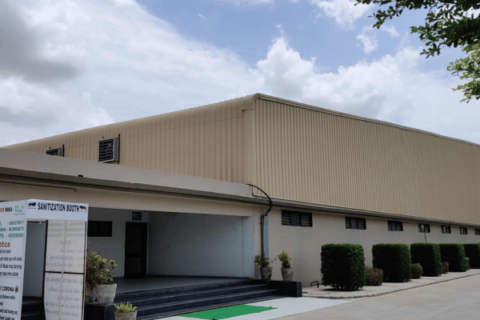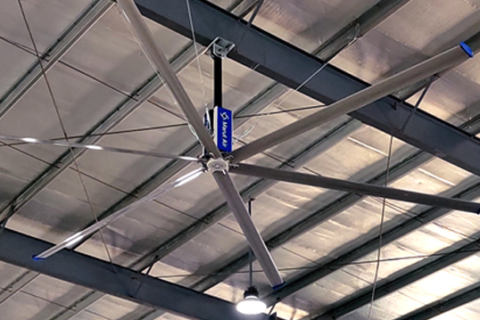In the management of building ventilation and indoor climate, the option between an exhaust fan and a ventilation fan is very important in determining the level of comfort in addition to efficiency. At Marut Air, it is our core business to offer answers for these vital elements of efficient air management.
Exhaust Fans: An Essential Instrument in Air Management
Moreover, exhaust fans are equally useful for ensuring the proper removal of dangerous impurities from the surrounding spaces. This is achieved by drawing out what is considered proper air within a room/area, as well as contaminants and water build-up, to guarantee a fresh and conducive environment. Apart from enhancing the quality of air in the surrounding environment, this process is also useful for controlling temperatures as it releases hot and humid air through specific outlets.
Nevertheless, the reader should understand that heavy duty exhaust fans are bound to need either replacement or cleaning up at some point in time. They are, however, noisy during operation, which can be a factor of concern depending on the location of the printer.
Also Read: Exhaust Fan – The Perfect Ventilating Solution
Ventilation Fans: Air Circulation
On the other hand, ventilation fans, especially axial industrial fans, are used for forceful airflow in a particular area. They take up very little space and are widely used for their efficiency in the use of power, hence making it easy for the firm to contain its power usage and its costs in the long run.
Although ventilation fans prove to be quite effective in increasing the rate of air change and stabilizing the climatic conditions inside the premises, similar to other mechanical devices, they generate noise when used at a higher rpm.
What are the Key Differences Between Exhaust and Ventilation Fans?
Some of the key differences between exhaust fans and ventilation fans include the following:
| Feature | Exhaust Fans | Ventilation Fans |
| Function | Removes stale air, odors and humidity | Circulates fresh air throughout a space |
| Airflow | Outward, from inside to outside | Recirculates or brings in fresh air |
| Placement | Bathrooms, kitchens and industrial areas | Living rooms, offices and large indoor spaces |
| Purpose | Targeted air removal | Overall ventilation and comfort |
| Benefits | Reduces odors and humidity | Improves air quality and comfort |
| Energy Use | Typically low, for localized areas | May be higher depending on coverage and airflow |
| Design & Size | Compact, often wall or ceiling-mounted | Can be larger; ceiling, wall or ducted systems |
| Maintenance | Requires regular cleaning to remove dust and debris | Requires cleaning and occasional motor/blade check |
| Application Scope | Specific areas | Whole-room or building-wide ventilation |
How to Select the Best Solution
There is quite a crucial difference between an exhaust fan and a ventilation fan when it comes to a specific must-meet requirement and a particular ambience. Marut Air advises some factors that one should also consider: the space available, the amount of noise and the degree of air quality required.
The effectiveness of an exhaust fan, which draws air from one area, is just as valuable as the large ventilation fan, which forces fresh air into the space; both styles signify a positive interior climate.
What are the Key Benefits of Installing the Right Fan?
Here are some of the key benefits of installing the right fans, including:
Enhanced comfort and productivity: Employees are more comfortable, attentive, and productive when air is moving freely and the temperature has been adjusted.
Savings in energy and costs: Industrial fans can take some of that load off the HVAC system and that means energy cost and a reduction in the monthly utility bill.
Improved air quality: Consistent air movement will help to distribute contaminants from the air, such as dust and fumes, creating a cleaner and healthier work environment.
Decreased heat stress: In hot work environments, fans create a wind-chill effect, which makes it feel cooler and lowers the potential for overheating.
Greater safety: Air movement and proper ventilation can help to dissipate the accumulation of flammable gases and reduce the risk of fire.
What are the Common Mistakes People Make with Fans?
Some common mistakes that people often make with industrial fans include:
Installation errors:
- Choosing the wrong fan size for the space
- Mounting the fan too high or low, or failing to check the ceiling load
- Forgetting to check electrical safety
Maintenance failures:
- Not cleaning regularly is enough to allow dirt and debris to build up on the blades and motor
- Using improper or insufficient lubrication levels for moving parts
- Not checking for imbalanced blades, which cause excessive vibration
Ignoring operational problems:
- Ignoring unusual noises, vibrations or shaking which may be caused by loose or worn-out parts
- Not thinking about why airflow or performance is reduced
- Ignoring excessive overheating or electrical issues can damage a motor and cause breakdowns
People Also Ask About Exhaust Fans and Ventilation Fans
Question 1. What is the key difference between exhaust and ventilation fans?
Answer. The major difference between exhaust and ventilation fans is that exhaust fans remove air from a space, whereas ventilation fans bring fresh air into the space.
Question 2. Do ventilation fans help reduce humidity and indoor pollutants?
Answer. Yes, ventilation fans can help to reduce humidity and indoor pollutants by removing moisture and replacing air with fresh outside air.
Question 3. What are the different types of exhaust and ventilation fans available?
Answer. There are different types of exhaust and ventilation fans, including ceiling-mounted, wall-mounted, window-mounted, inline and whole house.
Question 4. Can installing the right fan improve indoor air quality and comfort?
Answer. Yes, by installing the right fan, you can significantly improve the comfort and air quality by removing pollutants & moisture, circulating air and regulating temperature.





